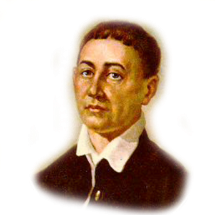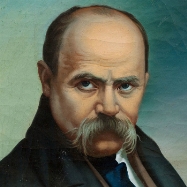Ukraine in the world, методична розробка заняття
Лисичанський промислово-технологічний фаховий коледж
Ukraine in the world
методична розробка заняття
з дисципліни «Іноземна мова ( за професійним спрямуванням)»
в закладах фахової передвищої освіти
Розробник: Скиба Н.М., старший викладач, викладач вищої категорії Лисичанського промислово-технологічного фахового коледжу
2021
ВСТУП
Методична розробка заняття виконана у відповідності з методичними рекомендаціями з підготовки та проведення практичних занять у закладах фахової передвищої освіти. Заняття підготовлено відповідно до робочої і навчальної програми з дисципліни «Іноземна мова ( за професійним спрямуванням)». Методична розробка заняття відповідає теоретичному й методико-практичному розділам навчальної програми, має інноваційний характер, відповідає новітнім технологіям навчання, спрямована на формування комунікативної компетенції майбутніх фахівців, розвиток пам'яті, уваги, фонематичного слуху студентів, сприяють зацікавленості та формуванню комунікативної компетенції майбутніх фахівців.
Позитивним у даній методичній розробці є творчий підхід до підготовки матеріалу заняття, використання різноманітних джерел інформації, застосування інтерактивних методів проведення заняття, технічних засобів навчання, залучення студентів до самостійної пошукової роботи; поєднання окремих елементів навчання та виховання в єдину цілісну систему.
Методична розробка заняття може бути рекомендована для викладачів іноземної мови в закладах фахової передвищої освіти в якості як основного, так і довідково-дидактичного матеріалу.
МЕТОДИЧНА РОЗРОБКА ЗАНЯТТЯ
Тема заняття: Ukraine in the world
Мета заняття:
Практична: вдосконалювати навички фонетичної вимови студентів; повторити вивчений професійно-орієнтований лексико-граматичний мінімум; формувати навички монологічного та діалогічного мовлення студентів на рівні мікровисловлювання; практикувати студентів у читанні текстів та виконанні післятекстових завдань; вдосконалювати навички аудіювання та вміння студентів щодо виконання різноманітних тематичних видів діяльності; вдосконалювати аналітичні навички та вміння студентів працювати в різних режимах, парах та малих групах; практикувати студентів щодо роботи з певними ситуаціями на основі поданих граматичних структур.
Розвиваюча: розвивати мовленнєву компетенцію, творчі здібності та психологічні якості (увагу, пам'ять, мислення, уяву) студентів; розвивати вміння студентів самостійно працювати з тематичними видами завдань; розвивати у студентів уміння переносу знань та навичок у нову ситуацію на основі здійснення проблемно – пошукової діяльності; формувати лінгвістичне мислення студентів як майбутніх фахівців; розвивати готовність студентів до участі в спілкуванні англійською мовою та до подальшої самоосвіти в галузі володіння даною мовою.
Виховна: виховувати в студентів такі риси характеру, як доброзичливість, толерантність, ввічливість, гуманізм, активність, товариськість, самостійність, працелюбство, уважність; розуміти важливість оволодіння англійською мовою і потребую користуватися нею в професійній діяльності; формувати в студентів повагу та чемне ставлення до обраної спеціальності; виховувати у студентів культури спілкування, прийнятої в сучасному цивілізованому світі, ціннісних орієнтацій, почуттів та емоцій.
Обладнання: словники, комп’ютер, роздавальний матеріал
Тип заняття: практичне
СТРУКТУРА ЗАНЯТТЯ:
1.Організаційний момент:
1)Привітання
2) Перекличка
3)Перевірка готовності до заняття
2. Мотивація навчальної та пізнавальної діяльності студентів, оголошення теми та цілей заняття.
3.Реалізація теми за планом
4. Підсумок заняття. Оцінювання
5. Домашнє завдання
План заняття:
I. Lead-in questions
https://destinations.com.ua/travel/places/688-national-symbols-of-ukraine-history-and-facts
1. What are the national symbols of Ukraine?
2. What holiday do we celebrate on August 24?
3. What are the colours of the national flag of Ukraine?
4. How many administrative provinces is the country divided into?
5. What traits of character are Ukrainians believed to have?
II. Reading
Read the following text. Ukraine in the world
Ukraine, a republic in Eastern Europe, is bounded on the north by Belarus and Russia; on the east by Russia; on the south by the Black Sea and the Sea of Azov; on the southwest by Romania and Moldova; and on the west by Hungary, Slovakia and Poland.With a total area of about 603,700 square kilometres, Ukraine is the second largest country in Europe after Russia. Kyiv is the capital and the largest city.
Almost the entire country of Ukraine is a vast flat plain, with elevations generally below 300 metres. The Carpathian Mountains intrude at the extreme west, and on the southern coast of the Crimean Peninsula are the Crimean Mountains. The highest point in Ukraine is Mount Hoverla in the Carpathians, with an elevation of 2,061 metres. Most major rivers flow south to the Black Sea. the Dnieper courses through the country for 1,204 kilometres. Other major rivers include the Dniester, Donets, Bug, and Danube. The Danube is an important water route linking the country with many European countries. There are many lakes throughout Ukraine. Lake Svytiaz, one of the largest natural lakes, has an area of 28 square kilometres. Ukraine has extremely fertile black-earth soils in the central and southern portions, totaling nearly two-thirds of the territory.
The climate of Ukraine is temperate continental, with a long summer and a short winter. The southern shores of the Crimea have a warm Mediterranean-type climate. Precipitation generally decreases from north to south; it is greatest in the Carpathians and least in the coastal lowlands of the Black Sea.
Ukraine is the second most populous country of the former USSR; only Russia has more people. Ukraine has a population of about 45,700,000 people. Average population density is 82 people per sq km. Settlement are densest in the far eastern and western regions. Around 67 percent of population inhabits urban areas. Population growth is relatively low. Ukrainians constitute 72 per cent and Russians constitute 22 per cent. Other minorities include Belarussians, Moldovans, Hungarians, Bulgarians and Crimean Tatars.
Ukraine is richly supplied with mineral resources, with many important deposits grouped closely together. Coal is Ukraine’s most abundant and heavily exploited mineral resource. Large iron ore deposits are located in the southeast, near the bituminous coal and anthracite deposits of the Donets Basin, the famous Donbas fields. The Nikopol region boasts one of the world’s richest concentrations of manganese ores. There are also commercial deposits of titanium ores, bauxite, mercury ores, mineral salts and sulphur.
Ukraine’s economy is highly industrialized. Industry contributes more than 40 per cent of total net material product and accounts for more than one-quarter of total employment. Industry is based largely on the republic’s vast mineral resources. Ukraine is the fourth largest steel producer in the world, and has a broad and diverse industrial base. However, economic policy since the world economic and financial crisis has had serious consequences for Ukraine’s competitiveness. Agriculture accounts for about 30 per cent of total net material product and one-quarter of total employment. Ukraine is a major producer and exporter of a wide variety of agricultural products, including wheat and sugar beet, being the world’s largest sugar beet producer. Other crops include potatoes, vegetables, fruit, sunflowers and flax. Animal husbandry is also important.
Ukraine is an independent democratic republic, as stated in the declaration of independence issued in August 1991. The head of state is president who is elected by a national ballot. The prime minister heads the council of ministers, which serves as the cabinet. Ukraine has the unicameral state legislature, the 450-member Supreme Council. Members are freely elected for a four-year term. The highest judicial court is the Supreme Court of five judges, elected for five-year terms by the legislature. At the regional level justice is administered by popularly elected “people’s courts”.
Ask as many questions as you can :

Essential vocabulary
|
fertile black-earth soil |
родючий чорнозем |
|
precipitation |
опади |
|
to decrease |
зменшуватися |
|
average population density |
середня густота населення |
|
net material product |
національний валовий продукт |
|
employment |
зайнятість |
|
consequence |
наслідок |
|
competitiveness |
конкурентоспроможність |
|
animal husbandry |
тваринництво |
|
ballot |
балотування, голосування |
|
unicameral state legislature |
однопалатна державна законодавча влада |
|
justice |
правосуддя |
III. Reading comprehension
Answer the following questions:
1. Where is Ukraine situated?
2. What countries does Ukraine border on?
3. What is the total area of Ukraine?
4. What is the population of the country?
5. What are the main features of Ukraine’s climate?
6. What can you say about Ukrainian natural resources and economy?
7. What is the political system of Ukraine?
8. What major political parties does Ukraine have today?
IV. Vocabulary and Grammar exercises
1. Give English equivalents to the following words:
Друга за розміром країна у Європі; велика рівнина; помірно континентальний клімат; населяти міську місцевість; приріст населення; поклади залізної руди; широка й різноманітна промислова база; найбільший у світі виробник цукрового буряка; Верховна Рада; народні суди.
2. Give the Ukrainian equivalents for:
The total area; to intrude at the extreme west; coastal lowland; settlement; minorities; to be richly supplied with; to boast; commercial deposits; steel producer; a major producer and exporter; to be elected by a national ballot, the highest judicial court; to be represented in the legislature.
3. Fill in the gaps with the words given below:
Republic, urban, entire, continental, populous, competitiveness, ballot, elevation
1) The most ________ territory of Ukraine is the eastern region.
2) The _______ coastline of the Black Sea is a resort area.
3) Victor Yanukovych won in the second run of presidential ________.
4) A _________ is a form of government in which the people possess the supreme power.
5) The average ________ of Ukraine is 175 metres above sea level.
6) Most of Ukraine’s population is ________ and live in cities and towns.
7) The ________ features of the Ukrainian climate intensify in an eastward direction.
8) One of the main tasks today is to strengthen the ________ of the national products worldwide.
4. Fill in the gaps with the necessary prepositions: After, at, for, from, in (3 times), inside, of, on, to, with
Lviv, the capital of Western Ukraine, is one of the best places (1) _____ the country. It was founded as a fort (2) _____ the mid- 13th century by Danylo Halytsky and was named (3) _____ his son Lev, which means lion. The lion is the historic symbol (4) _____the city. Lviv’s main street is Freedom Avenue. (5) _____ the middle of the avenue there is a monument (6) _____ Taras Shevchenko, and there are always a lot of flowers (7) _____ its feet. Shevchenko Avenue attracts people (8) _____ its beautiful buildings and various shops. Lviv Picture Gallery has one of the largest collections of European paintings in the country, with over 1000 paintings (9) _____ display. (10) _____ the Town Arsenal there is the Museum of Old Arms, with a display of various arms taken (11) _____ over 30 countries. Lviv is also famous (12) _____ its churches and monasteries.
III. Speech Exercises
1. Make up dialogues, using the questions below and your own ones.
1) What is geographical position of Ukraine?
2) What is Ukraine rich in?
3) What is the relief of the country?
4) What are the largest cities in Ukraine?
5) What can you say about the climate of Ukraine?
6) What can you say about the political system of Ukraine?
2. Writing
Who were these people? What did they do? Write in short about each of them.( Hryhoriy Skovoroda, Volodymyr the Great, Taras Shevchenko)



Additional text
- Read the text about Kyiv.
Ancient Kyiv is now the capital of Ukraine. Situated on the banks of the Dnieper River below its confluence with the Desna River, Kyiv is a major port and one of the largest and most important cities of Eastern Europe. Because of its many parks it is often called the “green city”.
Kyiv has a moderately continental climate. January temperatures average -6°C. Snow covers the ground usually from mid-November to the end of March. Summers are warm, and July temperatures average 19°C.The city’s favourable location has made it a major junction of railroads, highways and air routes. Kyiv, as the capital city, has major administrative functions. It is also an important industrial centre with a diverse economy. The principal industries are machine building and metalworking. Kyiv is also a major publishing centre.
The surviving historical and architectural monuments are most prominent in the ancient Upper Town. The Cathedral of St. Sophia, completed in 1037 and reconstructed in the 17th century, is decorated with frescoes and mosaics in its interior. Much of the Kyiv-Pechery Lavra monastery, built during the 11th century, was destroyed during World War II. Now a museum, it is also still in use as a monastery. This striking building is the most holy place in Ukraine. The caves on the property serve as burial grounds for monks. Nearby is the main thoroughfare, Khreshchatyk. Another Kyiv’s oldest and most beloved streets Andrew’s Descent has been the centre of city activity since ancient times. The steep and winding cobbled streets are the setting for outdoor concerts and festivals in the summer, and home to several art galleries selling traditional Ukrainian crafts. Mariyinsky Palace is a picturesque Baroque palace with a charming park around it on the hilly bank of the Dnieper River designed by Rastrelli and constructed in 1744. It is an official ceremonial residence of the President of Ukraine.
Kyiv is the cultural and academic centre of Ukraine. Research institutes, the National Scientific Library, the Central Botanical Garden and the Main Astronomical Observatory are located there. There are many government-funded museums in Kyiv. The most famous are the Natural History Museum, the Historical Museum, the National Art Museum and the Western and Eastern Art Museum. Pirogovo is an outdoor museum devoted to folk architecture and traditional village life in Ukraine.Among many professional theatres in Kyiv the most magnificent is the National Opera House which stages world class ballets and operas. Kyiv has also been the centre of Ukrainian film and mass media. In 1928 the Dovzhenko Artistic Film Studio was founded there.
Many monuments have been erected in Kyiv’s squares, parks and other public places. The oldest are the monuments to the Magdeburg law on the right bank of the Dnieper, St. Volodymyr in Volodymyr Hill Park and B. Khmelnytsky in St. Sophia Square. Most have been erected in honour Ukrainian political and scholarly figures and the heroes and victims of the wars and the Chernobyl accident.
Active vocabulary
|
confluence |
з’єднання (річок) |
|
junction |
перетинання доріг |
|
highway |
магістраль |
|
diverse |
різноманітний |
|
metalworking |
обробка металів |
|
interior |
інтер’єр |
|
monk |
монах |
|
thoroughfare |
головна вулиця |
|
steep |
крутий |
|
winding |
звивистий |
|
cobbled |
мощений бруківкою |
|
picturesque |
живописний |
2. Decide if the following statements are true or false:
1. Kyiv is situated on the confluence of the Dnieper River and the Desna River.
2. The processing of metals is one of the main branches of industry.
3. The Cathedral of St. Sophia and the Kyiv-Pechery Lavra monastery were built in the same century.
4. Andrew’s Descent is a main street of Kyiv.
5. The official residence of the President of Ukraine is Pirogovo.
3. Match the endings of the sentences.
|
1. Kyiv bears the name of prince Kyi, |
a) on both banks of the Dnieper. |
|
2. Under the rule of Yaroslav the Wise Kyivan Rus with Kyiv as its capital |
b) you should start your sightseeing from Khreshchatyk. |
|
3. The city lies |
c) can be reached by a funicular lift. |
|
4. If you have never been to Kyiv |
d) reached the height of its power. |
|
5. The ‘pleasure cruises’ that depart from the river terminal |
e) is the usual way of getting from place to place by most people in Kyiv. |
|
6. St. Michael’s Golden Domed Cathedral |
f) who lived on the old Kyiv Hill in the sixth century. |
|
7. The cost of the Metro is very cheap and |
g) offer stunning views of Kyiv’s sights. |
4. Supply the missing members of these words families. Check your answers with the dictionary.
1) product - production, to produce, productive.
2) location
3) to develop
4) favourable
5) to complete
6) processing
5. Complete the following dialogue with the proper verbs in the right forms and role-play it: to go (2 times), to leave, to look, to love, to take (2 times), to walk. Looking at vacation pictures
Kathy : Jim, I heard you _____ a trip to Kyiv. Is that right?
Jim : Yeah, I just got back this morning.
Kathy : That sounds really nice. What did you do there?
Jim : Well, we were only there for three days, so we didn’t do too much. We _____ shopping to the Metrograd Shopping Complex and went out to dinner a few times. At night we _____ around the city with some friends.
Kathy : Did you _____ any pictures?
Jim : Yes, I have them with me. Do you want to look at them?
Kathy : Sure, I _____ looking at photos.
Jim : This one is of my wife and me in the Hydropark, an island in the Dnieper river, and this one is our daughter Emily standing next to my wife.
Kathy : Your daughter _____ like her mother. Where was this picture taken?
Jim : That was taken at the Boryspil airport before we _____.
Kathy : Did you have time to go to St. Sophia’s Cathedral?
Jim : No, not this time. We _____ there last time.
Kathy : It looks like you all had a nice time.
Jim : Yeah, it was a lot of fun.
ВИСНОВОК
Тема «Traditional holidays in Ukraine, Great Britain and the USA» є важливою для вивчення, бо виховує у студентів почуття відповідальності до обраної спеціальності, розуміння важливості оволодіння англійською мовою і потреби користуватися нею у професійній діяльності; формує такі риси характеру, як доброзичливість, гуманізм, толерантність, працьовитість та самостійність.
Методична розробка рекомендована для використання в практичній діяльності для викладачів закладів фахової перед вищої освіти.


про публікацію авторської розробки
Додати розробку
